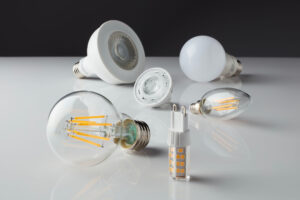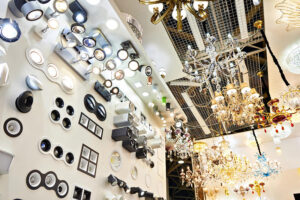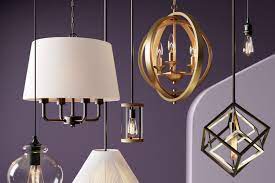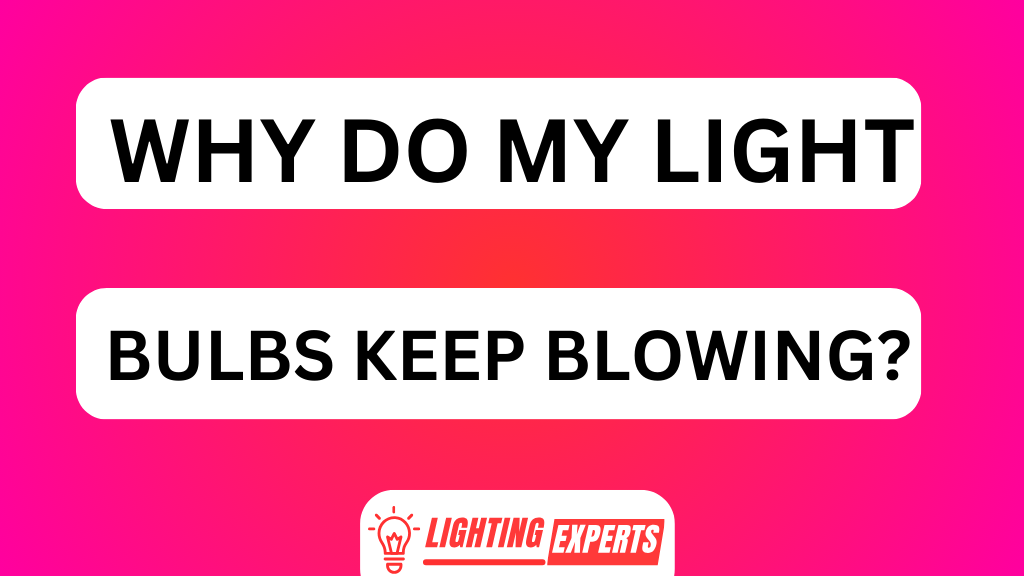Are you curious about how long LED strip lights last? Well, we’ve got the answer for you!
LED strip lights have become a popular choice for illuminating spaces due to their energy efficiency and versatility. But just how long can they shine bright?
In this article, we will delve into the factors that affect the lifespan of LED strip lights, provide tips to extend their longevity, and compare their lifespan to other lighting options.
So, let’s uncover the secrets behind these illuminating wonders!
Key Takeaways HOW LONG DO LED STRIP LIGHTS LAST
- Proper installation, usage, and maintenance techniques can help extend the lifespan of LED strip lights.
- Factors such as heat dissipation, voltage regulation, and efficient heat transfer impact the lifespan of LED strip lights.
- Addressing heat dissipation and voltage regulation through proper ventilation, use of heat sinks or aluminum profiles, and consistent voltage levels can help extend the lifespan of LED strip lights.
- Regular maintenance and monitoring for signs of replacement, such as flickering, dimming LEDs, color inconsistencies, and physical damage, are important for ensuring the longevity of LED strip lights.
Factors Affecting LED Strip Light Lifespan
You might be wondering what factors can affect the lifespan of your LED strip lights.
LED strip lights are known for their longevity, but there are certain factors that can impact how long they last.

One crucial aspect is proper installation and usage. Ensuring that your LED strip lights are installed correctly and used within their specified guidelines can significantly extend their lifespan.
Overheating is another factor to consider. LED strips generate heat, so adequate ventilation and avoiding excessive heat buildup will help prolong their life.
Additionally, regular maintenance is essential to keep your LED strip lights functioning optimally. Look out for signs of replacement such as flickering or dimming LEDs, color inconsistencies, or physical damage.
Average Lifespan of LED Strip Lights
When it comes to the lifespan of LED strip lights, there are several factors that can affect their longevity. These factors include the quality of the LEDs used, the operating temperature, and the wattage or power consumption.

Understanding these factors is key to extending the lifespan of LED strip lights and ensuring they last for as long as possible. By taking into account these considerations and implementing proper maintenance techniques, such as providing adequate ventilation and reducing heat buildup, users can significantly extend the lifespan of their LED strip lights.
Factors Affecting LED Lifespan
To maximize the lifespan of your LED strip lights, it’s important to consider factors such as heat dissipation and proper voltage regulation. These factors directly impact the brightness and efficiency of the LEDs.

Heat dissipation is crucial because excessive heat can degrade the LED chips, leading to premature failure. You must ensure that the LED strips are installed on surfaces that allow for efficient heat transfer, such as aluminum profiles or heat sinks.
Furthermore, maintaining a stable voltage is essential to protect the LEDs from overvoltage or voltage fluctuations that could damage them.
Extending LED Strip Lifespan
By properly addressing factors such as heat dissipation and voltage regulation, you can significantly increase the lifespan of your LED strip lights. Common LED strip light problems often arise from inadequate heat management, which can cause the LEDs to overheat and fail prematurely. To maximize LED strip light performance, it is crucial to ensure proper ventilation and use appropriate heat sinks or aluminum profiles that effectively dissipate heat.

Additionally, maintaining consistent voltage levels through the use of quality power supplies prevents fluctuations that can damage the LEDs. By addressing these issues, you can extend the lifespan of your LED strip lights and avoid common problems such as color fading, dimming, or complete failure.
Now let’s explore some tips to further enhance the longevity of your LED strip lights.
Transition: Now that we understand how important it is to address factors like heat dissipation and voltage regulation for maximizing LED strip light performance, let’s delve into some practical tips to extend their lifespan even further.
Tips to Extend the Lifespan of LED Strip Lights
One way to extend the lifespan of LED strip lights is by keeping them away from excessive heat sources. Heat can significantly reduce the longevity of LEDs, so proper installation techniques are crucial. Here are three tips to help extend the lifespan of your LED strip lights:
- Adequate ventilation: Ensure that there is enough airflow around the lights to dissipate heat effectively. Avoid placing them in enclosed spaces or covering them with non-breathable materials.
- Power management strategies: Use a power supply that matches the voltage and wattage requirements of your LED strip lights. Overpowering or underpowering can lead to premature failure.
- Dimming and brightness control: Adjusting the brightness level can not only create ambiance but also reduce stress on the LEDs, increasing their lifespan.
By implementing these installation techniques and power management strategies, you can maximize the lifespan of your LED strip lights and enjoy their benefits for longer periods.
Now let’s explore signs that LED strip lights need replacement.
Signs That LED Strip Lights Need Replacement
If your LED strip lights are flickering or emitting uneven light, it may be a sign that they need to be replaced. However, there are other common signs to look out for as well. For instance, if the brightness of the lights has significantly decreased or if certain sections of the strip are not lighting up at all, it could indicate a problem with the LEDs. Additionally, if you notice any discoloration or burn marks on the strip itself, it is likely time for a replacement.
When it comes to replacement options, there are several factors to consider. First and foremost, you’ll want to choose a high-quality LED strip light that matches your specific needs in terms of color temperature and brightness level. It’s also important to select a reliable brand known for its durability and long lifespan. Finally, make sure to properly install and maintain the new LED strip lights to ensure optimal performance and longevity.
| Common Signs | Replacement Options |
|---|---|
| Flickering | High-quality LEDs |
| Uneven Light | Reliable Brand |
| Decreased Brightness | Proper Installation |
| Sections Not Lighting Up | Regular Maintenance |
| Discoloration/Burn Marks | Suitable Color Temperature |
Remember that regular inspection and maintenance can help identify signs of wear and tear early on, allowing you to replace your LED strip lights before they completely fail. By being proactive in monitoring their condition and choosing quality replacements when necessary, you can enjoy consistent lighting in your space for years to come.
Comparing LED Strip Light Lifespan to Other Lighting Options
When comparing different lighting options, you’ll find that LED strip lights tend to have a longer lifespan than other types of lights available on the market. This is especially true when compared to traditional incandescent bulbs.
Here are three reasons why LED strip lights have a longer lifespan and why they are beneficial to use:
- Energy Efficiency: LED strip lights are highly energy efficient, converting most of the electricity into light rather than heat, unlike incandescent bulbs. This helps reduce strain on the components and extends their lifespan.
- Durability: LED strip lights are made with solid-state technology, which makes them more resistant to shock, vibrations, and temperature fluctuations compared to other lighting options. This durability contributes to their extended lifespan.
- Low Heat Emission: Unlike incandescent bulbs that emit a significant amount of heat, LED strip lights produce little to no heat during operation. This reduces the risk of damage caused by overheating and further increases their longevity.
Understanding Warranty and Maintenance for LED Strip Lights
When it comes to LED strip lights, it’s important to have a clear understanding of warranty coverage details and proper maintenance tips.
Our team has extensive knowledge on these topics and can provide you with the necessary information to ensure the longevity and performance of your LED strip lights.
We will discuss the specifics of warranty coverage, including what is included and any limitations, as well as provide detailed maintenance tips to help you keep your LED strip lights in optimal condition.
Warranty Coverage Details
You can find the warranty coverage details for your LED strip lights on the manufacturer’s website. Understanding the warranty is crucial when it comes to protecting your investment and ensuring that you have a hassle-free experience with your LED strip lights.
Here are three key points to consider:
- Warranty Claim Process: Familiarize yourself with the steps involved in making a warranty claim. This may include providing proof of purchase, describing the issue in detail, and following any specific instructions provided by the manufacturer.
- Common Warranty Exclusions: Be aware of what is not covered under the warranty. Common exclusions may include damage caused by improper installation, misuse, or tampering with the product.
- Duration of Coverage: Take note of how long your LED strip lights are covered under warranty. Most manufacturers offer warranties ranging from one to five years, depending on the model and brand.
By understanding these warranty coverage details, you can confidently navigate through any potential issues that may arise and ensure that you make full use of your LED strip light’s protection.
Now let’s move on to proper maintenance tips to further extend their lifespan and performance.
Proper Maintenance Tips
To ensure optimal performance, it’s important to regularly clean and dust your LED strip lights. Proper maintenance techniques can help prolong the lifespan of your lights and prevent common issues from occurring.
Start by turning off the power supply and gently wiping down the surface of the LED strips with a soft cloth or microfiber towel. This will remove any dust or debris that may have accumulated over time. Be careful not to apply too much pressure as this could damage the delicate LED chips.
Additionally, inspect the power connectors and make sure they are securely connected to avoid any loose connections which can cause flickering or dimming of the lights.
Frequently Asked Questions
How Do LED Strip Lights Compare to Traditional Incandescent Bulbs in Terms of Lifespan?
LED strip lights outlast traditional incandescent bulbs by a significant margin. Not only are they more energy-efficient, but their lifespan is also much longer. This means fewer replacements and less environmental impact overall.
Can LED Strip Lights Be Used Outdoors, and if So, How Does the Lifespan Differ?
Outdoor applications for LED strip lights can vary their lifespan. Factors such as weather exposure, temperature fluctuations, and moisture levels affect longevity. Regular maintenance, proper installation, and choosing waterproof options can help extend the lifespan of outdoor LED strip lights.
Are There Any Specific Maintenance Tasks That Need to Be Performed Regularly to Ensure the Longevity of LED Strip Lights?
LED strip light maintenance is crucial for ensuring longevity. Best practices include regular cleaning to remove dust and debris, checking for loose connections, and monitoring the temperature to prevent overheating.
What Are the Signs of a Malfunctioning LED Strip Light That May Require Replacement?
When LED strip lights start malfunctioning, signs such as flickering, dimming, or uneven lighting may be observed. These issues may indicate a need for replacement. Compared to incandescent bulbs, LED strip lights have a longer lifespan and require less frequent replacement.
Are There Any Specific Factors That Can Cause LED Strip Lights to Have a Shorter Lifespan Than the Average?
Factors affecting LED strip light lifespan can include improper installation, excessive heat, and poor quality materials. Common mistakes like incorrect voltage and overloading the circuit can also reduce their longevity.
Conclusion
So there you have it, folks. LED strip lights, the superheroes of the lighting world, are here to stay. With their incredible longevity and energy efficiency, they outshine all other lighting options.
From their average lifespan to the tips for extending their life, we’ve covered it all. So go ahead and illuminate your space with these magical ribbons of light, knowing that they will last longer than any other lighting solution out there.
And remember, if you ever need a replacement, just keep an eye out for those telltale signs.
Stay bright and illuminated!




